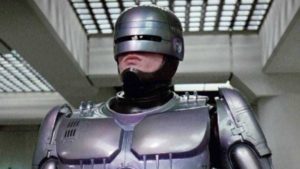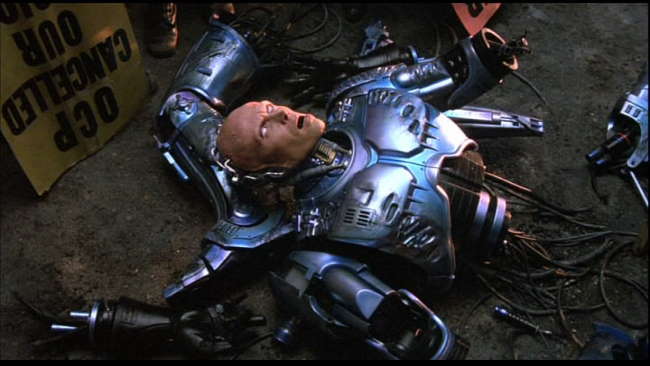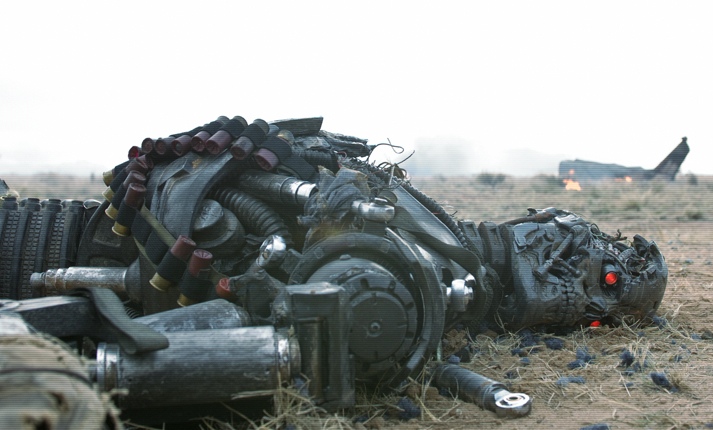Our hero walks through the dimly-lit offices of Fat Mop Zoo. A single, flickering lightbulb swings ominously. Okay, John actually hit it with his head, but still… Cobwebs clinging to his balding pate, he slumps into his weathered office chair in a cloud of swirling dust.
Right! So… How do I do this again? I don’t think I knew how to do it before, actually. Anyways…
I have a bad habit of “viewing shows from afar.” I read enough about them in topical articles, but don’t actually watch them for lack of time/enough interest. One of those shows lately has been Wandavision. A scene from the episode caught my attention.
WARNING: SPOILERS FOR A NEW EPISODE OF WANDAVISION AT THE TIME THIS ARTICLE WAS WRITTEN, ETC. ETC. ELECTRIC BOOGALOO and so on…
Don’t say I didn’t warn you. So towards the end (I guess?) of the episode, White Vision squares off against Wanda Maximoff’s mind-created Vision. The latter asks the former if he’s familiar with the Ship of Theseus thought experiment.
He allows that he does: “The Ship of Theseus is an artifact in a museum. Over time, its planks of wood rot and are replaced with new planks. When no original plank remains is it still the Ship of Theseus?”
The Wanda-created Vision continues his line of thinking: “Secondly, if those removed planks are restored and reassembled, free of the rot, is that the Ship of Theseus?”
Whitey Vision responds: “Neither is the true ship. Both are the true ship.”
After a brief conversation in regards to what each Vision has of the “real” vision, Wanda-Vision muses: “Perhaps the rot is the memories. The wear and tear of the voyages. The wood touched by Theseus himself.” At this point, he restores Whitey-Vision’s memories, et cetera, and so on.
My point is that it got me thinking. One of the over-arching themes that surrounds the androids, or “Synthetics,” in my books is what level of consciousness they have. More to the point: What level of “selfness” do they have? This thought experiment is especially applicable to “transfers,” or Synthetics that house a transferred human consciousness.
I touched on the idea in Preservation Protocol and have explored it in the No Road Home series. The subject takes precedence in the final book in the series, Deliverance, that I’m currently writing. If you could transfer an exact map of someone’s mind to an artificial being, would that being BE that someone?
This question gets underlined in the last book when it’s confirmed that a character’s original human form is still alive with all of their faculties intact. In other words, you have one human, and one “clone.” Both have the same exact thoughts, memories, feelings, etc. Is the human THE person? Can the Synthetic not also be considered the person?
The question gains weight when one considers a “terminal transfer.” The “original” person expires at the conclusion of the mind transfer to the Synthetic. It could be argued that the Synthetic is undoubtedly the person, now. The human body ceased to function, and the artificial one woke up believing itself to be that person.
One inevitably wades into metaphysical waters when you further extrapolate on the idea. What happens when the human body wakes up? Both are conscious. Would the Synthetic be considered to have an artificial consciousness? And what is consciousness, anyway?
According to Merriam-Webster, it is “sentience or awareness of internal or external existence.” It’s the whole “I think, therefore I am” deal. So arguably, both android and human would be the same person.
It’s all quite mind-bending, but it’s something that humans are going to have to explore in the future. Scientists are already working on devices that could one day augment — or even replace — memory in the brain. This actually adds shades of gray to the conversation.
At what point would one’s consciousness be seated in the technology instead of the brain? Science can’t even agree yet on where consciousness physically manifests. Further, if the mind is wholly encompassed in that technology, what happens if it is powered down?
When one is “woken up,” will it be the same person? Or would it be like dying, with the person who “wakes up” being a precise clone of the former consciousness? It could be that, as with your organic brain, having your technological brain power down would essentially be the death of your unique consciousness.
This is how the question is handled in the canon of my books. Synthetics fear a loss of power to their neural net, as continual power is required to maintain their conscious state even in dormancy. Zero power will collapse the neural net, resulting in irreversible brain “death” for the individual.
A fun, but equally disturbing aside from the world of Star Trek: Transporters. In the fictional universe of Star Trek, transporters work by mapping out the position of every molecule of your body, breaking it down into a data-matter stream, and precisely reassembling it on the other side. We find similar questions here.
This would obviously obstruct your consciousness, not to mention literally obliterate your physical brain, regardless of it’s reassembly on the other side. Would you, in fact, still be you? For the religious: Would this scrambling happen to your soul, as well? Would it get left behind? Travel along?
More ominously, scientific consensus at the moment is that transporting would be a little more… uh, lethal in this reality. Such a system would most likely still map your molecules, but then it would recreate those molecules on the far side like another Star Trek staple, the replicator. The kicker? It would be a perfect recreation of you, and the original would be destroyed.
It kind of puts all of Star Trek into a new light. Just imagine every time Kirk or Picard or any of your favorite characters beam themselves somewhere, they’re dying at the moment of transfer. The person stepping out on the other side of the process is just another in a line of clueless clones, doomed to die the next time they need to be somewhere fast.
Any of that should be more than enough to tighten your sphincter. It’s also pretty thought-provoking. For more thought experiments on the subject, check out Preservation Protocol and the No Road Home series, and be sure to look out for Deliverance later this year.
-John






